How to read sheet music
Here, you'll learn all the basics for reading sheet music: familiarize yourself with the treble and bass clefs, learn to read notes and understand rhythm. Each explanation includes some exercises presented in video form with various pieces from the classical, pop and jazz repertoires. If you'd like to go further, explore TomTheory, a method designed by Angelo Lombardo, a music teacher and Dean of the Lausanne Conservatoire, and published by Tomplay.
The treble and bass clefs, learn to read notes
Before starting to read a piece of sheet music, it is essential to understand the system of lines and clefs, particularly the treble and bass clefs. There are others, but these are the clefs used in the majority of music.

A stave is made up of five horizontal lines (and therefore four spaces). These are useful for knowing the height of notes and for being able to read them.
A group of two staves or more, bracketed together, is called a system. These are seen on sheet music for the piano, for example: the upper line is for all the treble notes and is played by the right hand and the lower stave is for the bass notes, played by the left hand.
(basic reference for beginners which no longer applies given greater experience)
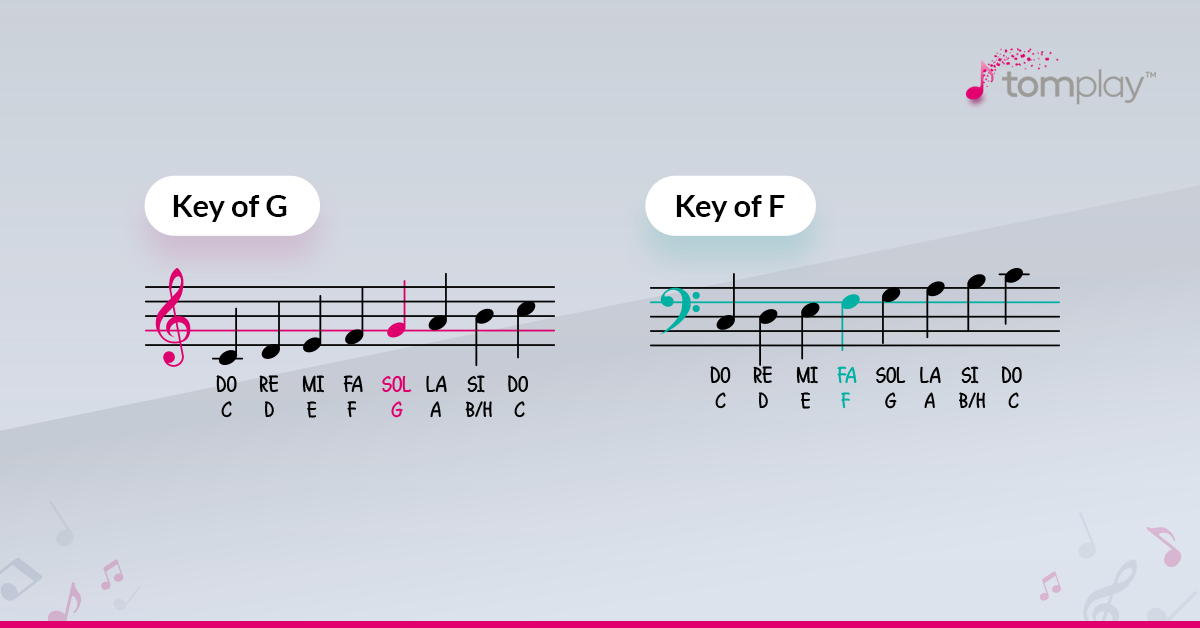
The treble clef is the most common. When linked to a piano keyboard, it shows the higher notes, those found to the right after middle C (in grey below).
The starting point of the treble clef indicates the position of the note G: on the second line up from the bottom.
The bass clef shows the lower notes, located to the left before middle C.
The starting point of the bass clef indicates the position of the note F: on the second line down from the top.
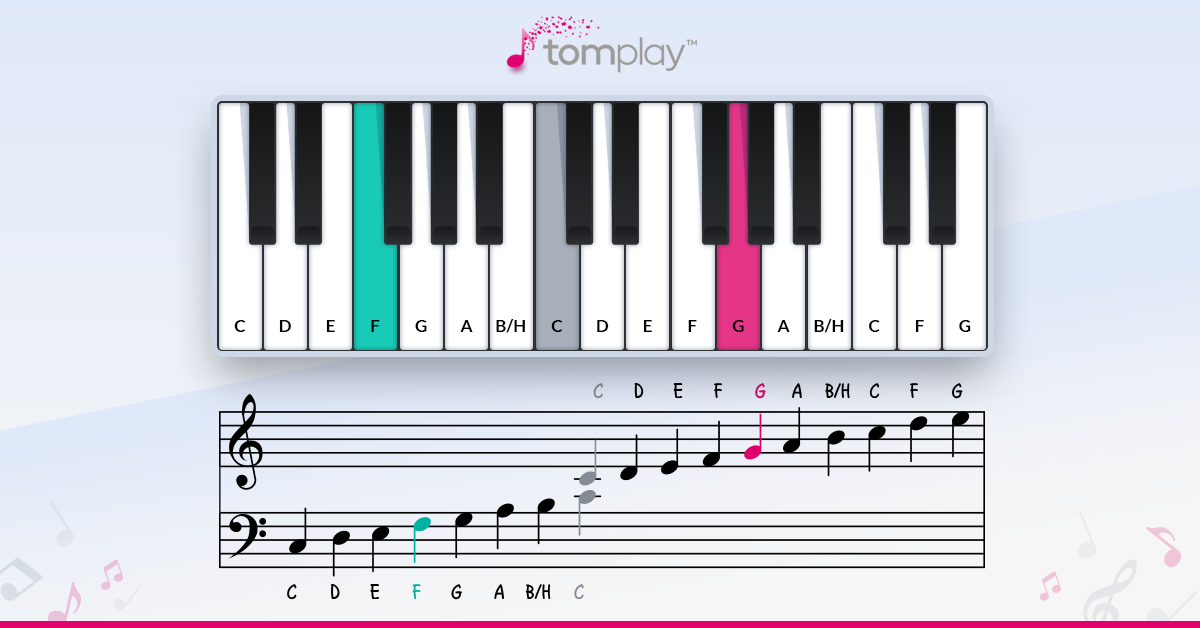
Have you noticed that middle C (in grey above) has a line through it in both the treble clef and the bass clef? This line represents an imaginary extra line between the staves and makes middle C an easy note to locate on the page of music, as well as locating it above the bass clef and below the treble clef!
Being able to recognize the note G in the treble clef, F in the bass clef and middle C means you have a good basis for being able to read notes.
If you don't know them yet, learn the names of the notes by heart (a series of 7 notes is called an octave): it's the famous "do-re-mi-fa-sol-la-si-do" (or C-D-E-F-G-A-B-C) going up and also "do-si-la-sol-fa-mi-re-do" (C-B-A-G-F-E-D-C) coming back down. It'll be very useful!
Practise saying the notes aloud by clicking on the video below:
As you can see, the notes are located alternately on the lines and spaces. Find a familiar note on your sheet music and count note by note on each line and space, either going up or going down. If you don't manage to do this first time, don't give up! Your brain has to learn to do it automatically, so repetition is necessary. With some practice, you'll recognize more and more notes by heart!
It's your turn! Explore our exercises for learning to read notes:
Now you know how to find notes on their respective line or space, practise reading the name of the notes aloud in the two pieces below. In each video, you'll find the exercise part and then the correction part where the names of the notes are displayed. This is an extract from the TomTheory method. If you would like to get access to all the exercises, you can purchase the TomTheory method here.
Exercise No. 1 - "She'll be coming round the mountain":

Exercise No. 2 - "Bingo":

Exercise No. 3 - "What a Wonderful World":

Exercise No. 4 - Schubert's Ave Maria:

Note values, rhythm signature
Each note has a different length according to its shape or colour: this is the basis of rhythm.
As Claude Debussy said, "music is the silence between the notes". When you're not playing, the notes are replaced by pauses, which also have different shapes and lengths.
Let's have a look now at the different values:
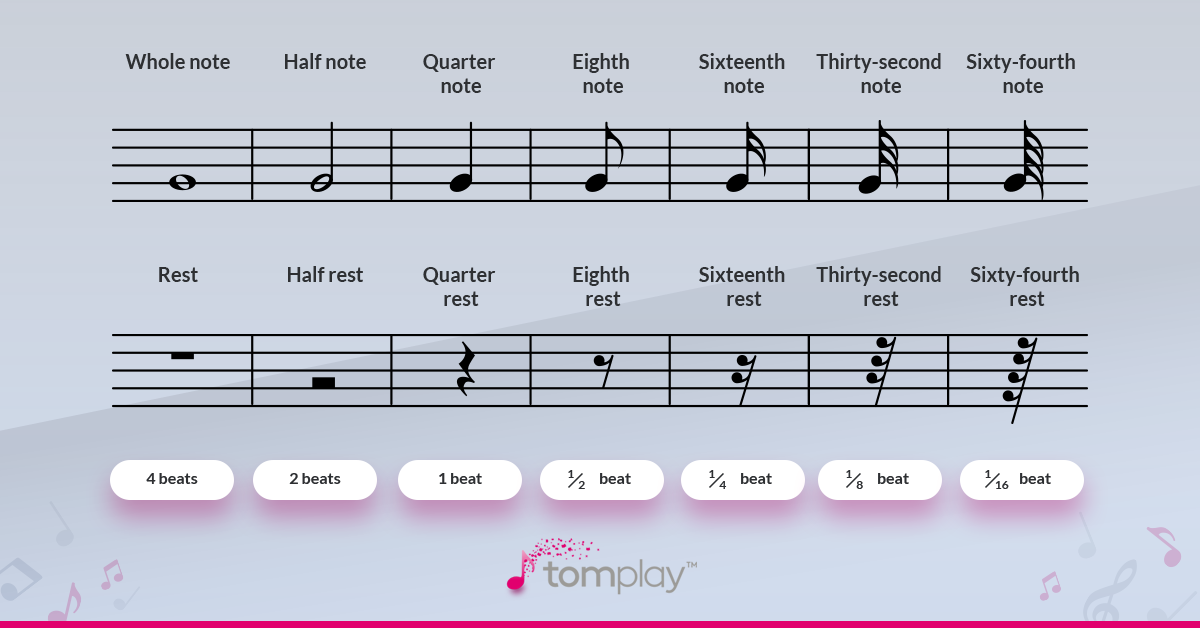
Just like 1+1 = 2 or 2+2 = 4, these values correspond with each other. Take a look:

A whole note is equal to two half notes, which are equal to four quarter notes and eight eighth notes and so on!
We use beats in order to measure the different values of these rhythms. For example, using a metronome will help you to play in rhythm, beating each time in a regular way. The speed at these beats are played one after the other (and therefore of the music) is called the tempo.
In order to make reading the rhythm easier, we separate the notes (and therefore their values) into groups on the stave using vertical lines: these are the measures.
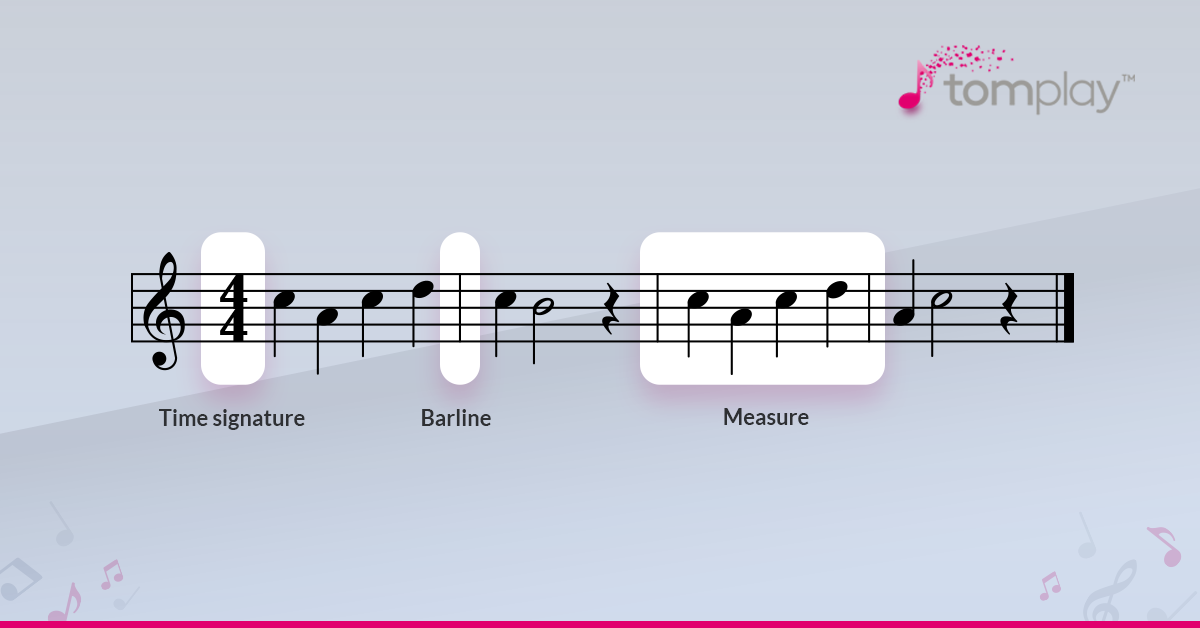
Have you understood the meaning of these values? Great! But what do these figures at the beginning of the stave, just after the treble clef, mean? Looking at those are going to allow us to determine how many beats there are in each measure of a piece and what is the beat unit. This is called the measure time!
Understanding the bar or measure time
In a measure time of 4/4, the upper figure indicates the number of beats there are in each bar or measure: here, it's 4 beats. It's a 4-beat measure!
The lower figure indicates the value of the whole note, allowing you to find the beat unit in the measure: 1/4 of a whole note = 1 quarter note. Our beat unit is therefore a quarter note.
Let's sum up: the 4/4 bar or measure time tells us it's:
- a 4-beat measure
- the measure unit: a whole note
- the beat unit: a quarter note
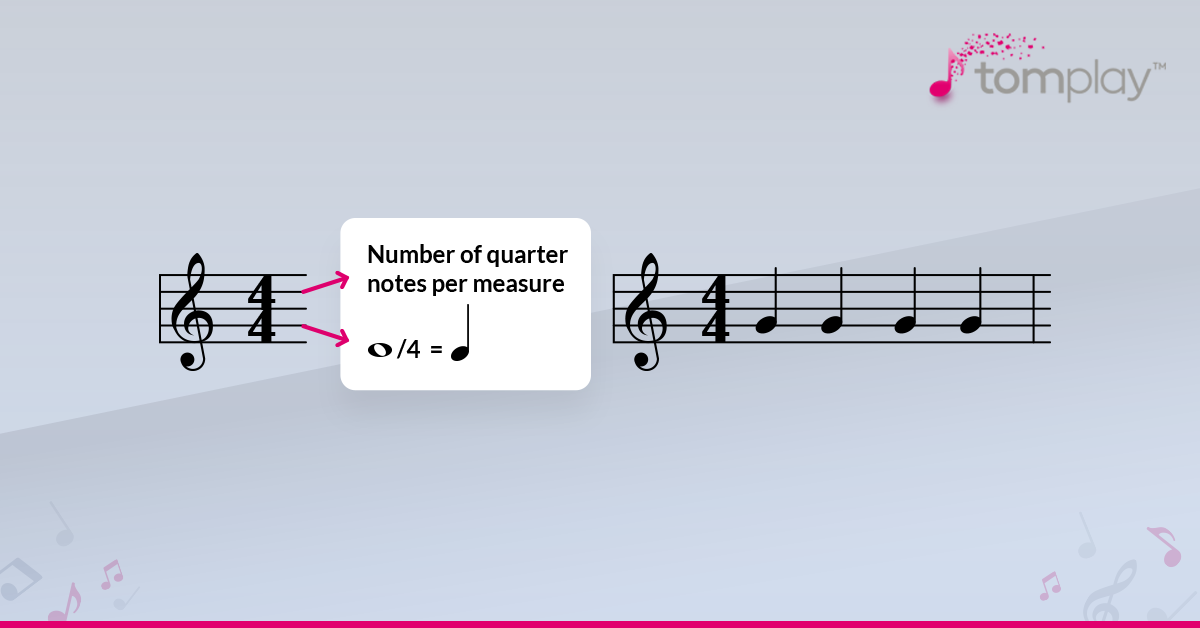
It's a 4-beat measure with 4 quarter notes per measure.
? There is another way to represent a 4-beat measure: C
Let's look at some new measure times together:
A 2/2 measure time means:
- A 2-beat measure
- The measure unit: a whole note
- Beat unit: a quarter note
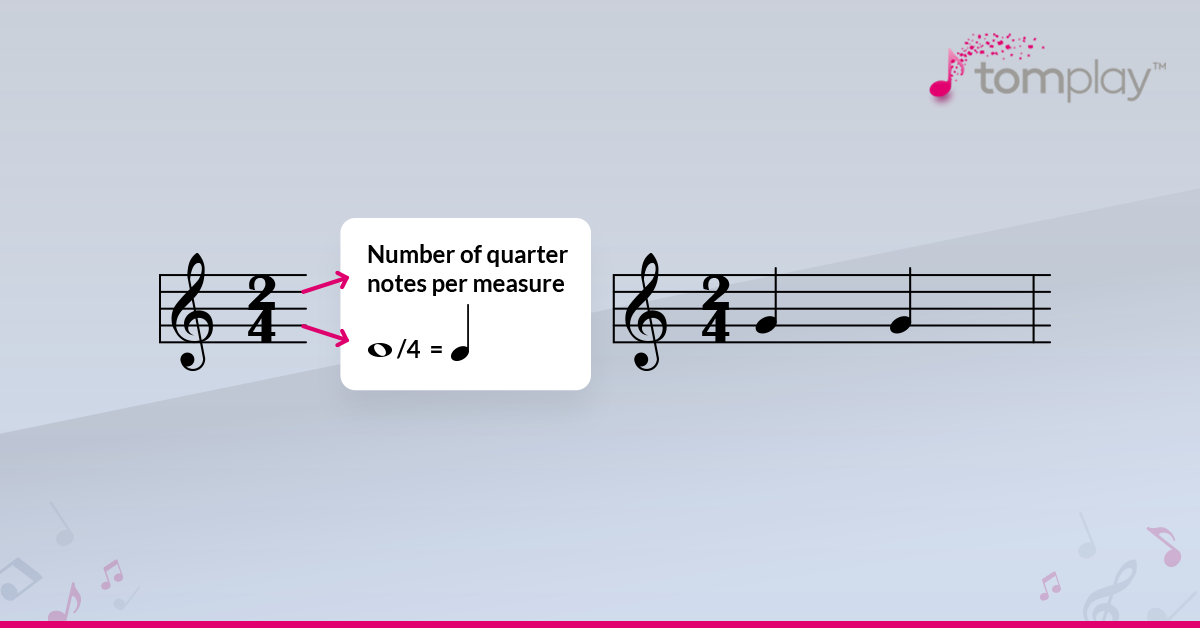
This is a 2-beat measure with 2 quarter notes per measure.
The 3/4 measure time means:
- A 3-beat measure
- Measure unit: a whole note
- Beat unit: a quarter note
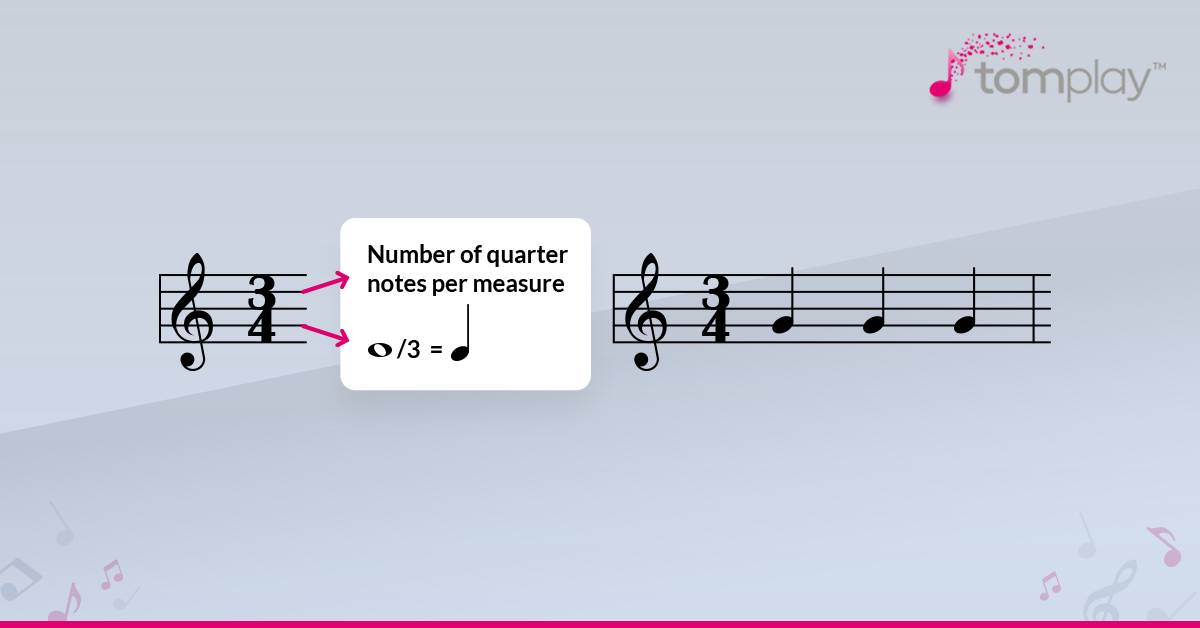
This is a 3-beat measure with 3 quarter notes per measure.
Please note: the measures above are for quarter notes. To explore other measure times, download the full method!
It's your turn! Explore our exercises for learning to clap the rhythm
Now you have understood how to read the rhythm, practise using the rhythm exercises below. In each video, you'll find the exercise part and then the correction part with the rhythm spoken aloud. Clap your hands together or on the table to mark the beat while the sheet music scrolls on your screen. This is an extract from the TomTheory method. If you would like to get access to all the exercises, you can purchase the TomTheory method here.
Exercise No. 1 - Quarter and half notes:

Exercise No. 2 - The quarter rest

Exercise No. 3 - The whole note:

Exercise No. 4 - The dotted half note:

Go further: sing the notes in rhythm!
Now you know how to read the notes and work out the rhythm, you just need to put the two together and sing the notes in rhythm! Explore some other exercises below, taken from known pieces to make reading the sheet music easier, sing the name of the notes and clap at the same time as the sheet music scrolls on your screen. The passages to work on are highlighted in colour. This is an extract from the TomTheory method. If you would like to get access to all the exercises, you can purchase the TomTheory method here.
Exercise No. 1 - "Twinkle Twinkle Little Star":

Exercise No. 2 - "On the bridge of Avignon":

Exercise No. 3 - "Hallelujah":

Exercise No. 4 - "Titanic":

Exercise No. 5 - Pachelbel's Canon:

We hope you have been able to learn more about reading notes and rhythm through this article and we wish you lots of joy in practising reading music with the TomTheory method and your instrument with Tomplay!
TomTheory - the interactive method for reading music
TomTheory is a progressive and complete method for musical training designed by Angelo Lombardo, teacher and Dean of the Lausanne Conservatoire and published by Tomplay.
It contains exercises for reading music and rhythm, as well as a selection of pieces from the musical repertoire allowing students to make the link between playing their instrument or singing and reading music.



Add a comment...